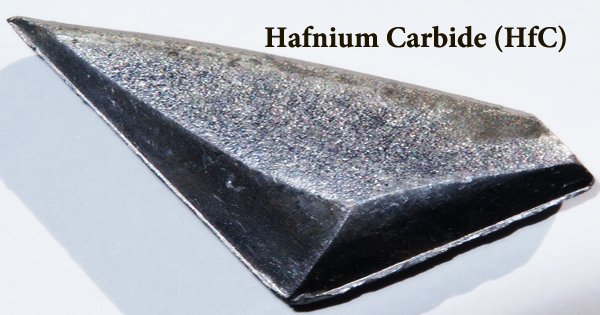Mortgage loans are generally structured as long-term loans, the periodic payments for which are similar to an annuity and calculated according to the time value of money formulae. The most basic arrangement would require a fixed monthly payment over a period of ten to thirty years, depending on local conditions. Over this period the principal component of the loan (the original loan) would be slowly paid down through amortization. In practice, many variants are possible and common worldwide and within each country.
Loan to value and downpayments
Upon making a mortgage loan for the purchase of a property, lenders usually require that the borrower make a downpayment; that is, contribute a portion of the cost of the property. This downpayment may be expressed as a portion of the value of the property (see below for a definition of this term). The loan to value ratio (or LTV) is the size of the loan against the value of the property. Therefore, a mortgage loan in which the purchaser has made a downpayment of 20% has a loan to value ratio of 80%. For loans made against properties that the borrower already owns, the loan to value ratio will be imputed against the estimated value of the property.
The loan to value ratio is considered an important indicator of the riskiness of a mortgage loan: the higher the LTV, the higher the risk that the value of the property (in case of foreclosure) will be insufficient to cover the remaining principal of the loan.
Value: appraised, estimated, and actual
Since the value of the property is an important factor in understanding the risk of the loan, determining the value is a key factor in mortgage lending. The value may be determined in various ways, but the most common are:
- Actual or transaction value: this is usually taken to be the purchase price of the property. If the property is not being purchased at the time of borrowing, this information may not be available.
- Appraised or surveyed value: in most jurisdictions, some form of appraisal of the value by a licensed professional is common. There is often a requirement for the lender to obtain an official appraisal.
- Estimated value: lenders or other parties may use their own internal estimates, particularly in jurisdictions where no official appraisal procedure exists, but also in some other circumstances.
Payment and debt ratios
In most countries, a number of more or less standard measures of creditworthiness may be used. Common measures include payment to income (mortgage payments as a percentage of gross or net income); debt to income (all debt payments, including mortgage payments, as a percentage of income); and various net worth measures. In many countries, credit scores are used in lieu of or to supplement these measures. There will also be requirements for documentation of the creditworthiness, such as income tax returns, pay stubs, etc; the specifics will vary from location to location.
Some lenders may also require a potential borrower have one or more months of “reserve assets” available. In other words, the borrower may be required to show the availability of enough assets to pay for the housing costs (including mortgage, taxes, etc.) for a period of time in the event of the job loss or other loss of income.
Many countries have lower requirements for certain borrowers, or “no-doc” / “low-doc” lending standards that may be acceptable in certain circumstances.
Standard or conforming mortgages
Many countries have a notion of standard or conforming mortgages that define a perceived acceptable level of risk, which may be formal or informal, and may be reinforced by laws, government intervention, or market practice. For example, a standard mortgage may be considered to be one with no more than 70-80% LTV and no more than one-third of gross income going to mortgage debt.
A standard or conforming mortgage is a key concept as it often defines whether or not the mortgage can be easily sold or securitized, or, if non-standard, may affect the price at which it may be sold. In the United States, a conforming mortgage is one which meets the established rules and procedures of the two major government-sponsored entities in the housing finance market (including some legal requirements). In contrast, lenders who decide to make nonconforming loans are exercising a higher risk tolerance and do so knowing that they face more challenge in reselling the loan. Many countries have similar concepts or agencies that define what are “standard” mortgages. Regulated lenders (such as banks) may be subject to limits or higher risk weightings for non-standard mortgages. For example, banks and mortgage brokerages in Canada face restrictions on lending more than 80% of the property value; beyond this level, mortgage insurance is generally required.
Foreign currency mortgage
In some countries with currencies that tend to depreciate, foreign currency mortgages are common, enabling lenders to lend in a stable foreign currency, whilst the borrower takes on the currency risk that the currency will depreciate and they will therefore need to convert higher amounts of the domestic currency to repay the loan.
Repaying the mortgage
In addition to the two standard means of setting the cost of a mortgage loan (fixed at a set interest rate for the term, or variable relative to market interest rates), there are variations in how that cost is paid, and how the loan itself is repaid. Repayment depends on locality, tax laws and prevailing culture. There are also various mortgage repayment structures to suit different types of borrower.
Capital and interest
The most common way to repay a loan is to make regular payments of the capital (also called the principal) and interest over a set term. This is commonly referred to as (self) amortization in the U.S. and as a repayment mortgage in the UK. A mortgage is a form of annuity (from the perspective of the lender), and the calculation of the periodic payments is based on the time value of money formulas. Certain details may be specific to different locations: interest may be calculated on the basis of a 360-day year, for example; interest may be compounded daily, yearly, or semi-annually; prepayment penalties may apply; and other factors. There may be legal restrictions on certain matters, and consumer protection laws may specify or prohibit certain practices.
Depending on the size of the loan and the prevailing practice in the country the term may be short (10 years) or long (50 years plus). In the UK and U.S., 25 to 30 years is the usual maximum term (although shorter periods, such as 15-year mortgage loans, are common). Mortgage payments, which are typically made monthly, contain a capital (repayment of the principal) and an interest element. The amount of capital included in each payment varies throughout the term of the mortgage. In the early years the repayments are largely interest and a small part capital. Towards the end of the mortgage the payments are mostly capital and a smaller portion interest. In this way the payment amount determined at outset is calculated to ensure the loan is repaid at a specified date in the future. This gives borrowers assurance that by maintaining repayment the loan will be cleared at a specified date, if the interest rate does not change.
Interest only
The main alternative to a capital and interest mortgage is an interest-only mortgage, where the capital is not repaid throughout the term. This type of mortgage is common in the UK, especially when associated with a regular investment plan. With this arrangement regular contributions are made to a separate investment plan designed to build up a lump sum to repay the mortgage at maturity. This type of arrangement is called an investment-backed mortgage or is often related to the type of plan used: endowment mortgage if an endowment policy is used, similarly a Personal Equity Plan (PEP) mortgage, Individual Savings Account (ISA) mortgage or pension mortgage. Historically, investment-backed mortgages offered various tax advantages over repayment mortgages, although this is no longer the case in the UK. Investment-backed mortgages are seen as higher risk as they are dependent on the investment making sufficient return to clear the debt.
Until recently it was not uncommon for interest only mortgages to be arranged without a repayment vehicle, with the borrower gambling that the property market will rise sufficiently for the loan to be repaid by trading down at retirement (or when rent on the property and inflation combine to surpass the interest rate).
No capital or interest
For older borrowers (typically in retirement), it may be possible to arrange a mortgage where neither the capital nor interest is repaid. The interest is rolled up with the capital, increasing the debt each year.
These arrangements are variously called reverse mortgages, lifetime mortgages or equity release mortgages (referring to home equity), depending on the country. The loans are typically not repaid until the borrowers die, hence the age restriction. For further details, see equity release.
Interest and partial capital
In the U.S. a partial amortization or balloon loan is one where the amount of monthly payments due are calculated (amortized) over a certain term, but the outstanding capital balance is due at some point short of that term. In the UK, a part repayment mortgage is quite common, especially where the original mortgage was investment-backed and on moving house further borrowing is arranged on a capital and interest (repayment) basis.
Variations
Graduated payment mortgage loan have increasing costs over time and are geared to young borrowers who expect wage increases over time. Balloon payment mortgages have only partial amortization, meaning that amount of monthly payments due are calculated (amortized) over a certain term, but the outstanding principal balance is due at some point short of that term, and at the end of the term a balloon payment is due. When interest rates are high relative to the rate on an existing seller’s loan, the buyer can consider assuming the seller’s mortgage. A wraparound mortgage is a form of seller financing that can make it easier to for a seller to sell a property. A biweekly mortgage has payments made every two weeks instead of monthly.
Budget loans include taxes and insurance in the mortgage payment; package loans add the costs of furnishings and other personal property to the mortgage. Buydown mortgages allow the seller or lender to pay something similar to mortgage points to reduce interest rate and encourage buyers. Homeowners can also take out equity loans in which they receive cash for a mortgage debt on their house. Shared appreciation mortgages are a form of equity release. In the US, foreign nationals due to their unique situation face Foreign National mortgage conditions.
Flexible mortgages allow for more freedom by the borrower to skip payments or prepay. Offset mortgages allow deposits to be counted against the mortgage loan. in the UK there is also the endowment mortgage where the borrowers pay interest while the principal is paid with a life insurance policy.
Commercial mortgages typically have different interest rates, risks, and contracts than personal loans. Participation mortgages allow multiple investors to share in a loan. Builders may take out blanket loans which cover several properties at once. Bridge loans may be used as temporary financing pending a longer-term loan. Hard money loans provide financing in exchange for the mortgaging of real estate collateral.
Foreclosure and non-recourse lending
In most jurisdictions, a lender may foreclose the mortgaged property if certain conditions – principally, non-payment of the mortgage loan – occur. Subject to local legal requirements, the property may then be sold. Any amounts received from the sale (net of costs) are applied to the original debt. In some jurisdictions, mortgage loans are non-recourse loans: if the funds recouped from sale of the mortgaged property are insufficient to cover the outstanding debt, the lender may not have recourse to the borrower after foreclosure. In other jurisdictions, the borrower remains responsible for any remaining debt.
In virtually all jurisdictions, specific procedures for foreclosure and sale of the mortgaged property apply, and may be tightly regulated by the relevant government. There are strict or judicial foreclosures and non-judicial foreclosures, also known as power of sale foreclosures. In some jurisdictions, foreclosure and sale can occur quite rapidly, while in others, foreclosure may take many months or even years. In many countries, the ability of lenders to foreclose is extremely limited, and mortgage market development has been notably slower.
Mortgage lending in Continental Europe
Within the European Union, the Covered bonds market volume (covered bonds outstanding) amounted to about EUR 2 trillion at year-end 2007 with Germany, Denmark, Spain, and France each having outstandings above 200,000 EUR million. In German language, Pfandbriefe is the term applied. Pfandbrief-like securities have been introduced in more than 25 European countries – and in recent years also in the U.S. and other countries outside Europe – each with their own unique law and regulations. However, the diffusion of the concept differ: In 2000, the US institutions Fannie Mae and Freddie Mac together reached one per cent of the national population. Furthermore, 87 per cent of their purchased mortgages were granted to borrowers in metropolitan areas with higher income levels. In Europe, a wider market has been achieved: In Denmark, mortgage banks reached 35 per cent of the population in 2002, while the German Bausparkassen achieved widespread regional distribution and more than 30 per cent of the German population concluded a Bauspar contract (as of 2001).
Costs
A study issued by the UN Economic Commission for Europe compared German, US, and Danish mortgage systems. The German Bausparkassen have reported nominal interest rates of approximately 6 per cent per annum in the last 40 years (as of 2004). In addition, they charge administration and service fees (about 1.5 per cent of the loan amount). In the United States, the average interest rates for fixed-rate mortgages in the housing market started in the tens and twenties in the 1980s and have (as of 2004) reached about 6 per cent per annum. However, gross borrowing costs are substantially higher than the nominal interest rate and amounted for the last 30 years to 10.46 per cent. In Denmark, similar to the United States capital market, interest rates have fallen to 6 per cent per annum. A risk and administration fee amounts to 0.5 per cent of the outstanding debt. In addition, an acquisition fee is charged which amounts to one per cent of the principal.
Recent trends
On July 28, 2008, US Treasury Secretary Henry Paulson announced that, along with four large U.S. banks, the Treasury would attempt to kick start a market for these securities in the United States, primarily to provide an alternative form of mortgage-backed securities.Similarly, in the UK “the Government is inviting views on options for a UK framework to deliver more affordable long-term fixed-rate mortgages, including the lessons to be learned from international markets and institutions”.
George Soros’s October 10, 2008 Wall Street Journal editorial promoted the Danish mortgage market model. A survey of European Pfandbrief-like products was issued in 2005 by the Bank for International Settlements;[14] the International Monetary Fund in 2007 issued a study of the covered bond markets in Germany and Spain, while the European Central Bank in 2003 issued a study of housing markets, addressing also mortgage markets and providing a two page overview of current mortgage systems in the EU countries.
















